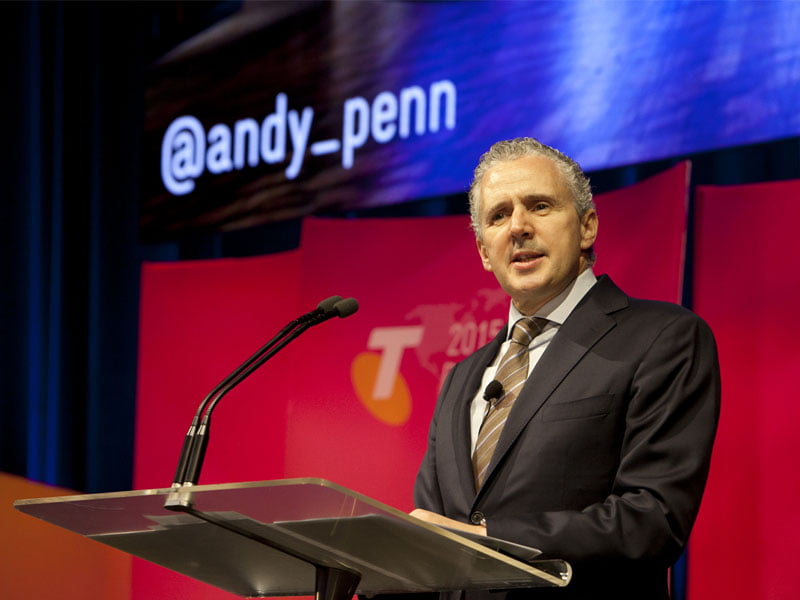Ever since David Thodey stepped down from the top job at Telstra, there’s been a growing and nagging sense that things are not quite as fabulous as they were. It’s like a hangover after a good party.
There were rumblings within a few months of his exit about the different style and priorities of his successor Andy Penn, who was promoted from chief financial officer.
On paper it looked like a text-book case of well-managed internal succession by the Telstra board led by the imperious grande dame of Australian business Catherine Livingstone, who also recently stepped down in favor of the plain-talking John Mullin.

Still, it would have been a surprise had there not been changes under a new boss. That’s half the point of company renewal and Mr Thodey’s six years is just about the right length of time to head a big corporation.
Changing the chief executive at a company the size of Telstra – similar to one of Australia’s big banks or mining companies – is like changing Prime Minister. And it always takes time for the new boss to refresh the executive team.
People that missed out on the top job will walk away – and they have. Others will be harder to move, and have to be nudged a little harder if the new boss wants more fresh faces.
Former Telstra chief Ziggy Switkowski once likened changing the direction of Telstra to making the cruise ship the Queen Mary change direction – it’s not a quick process.
Mr Thodey left Telstra that was so improved in terms of its relations with both its customers, shareholders – the company’s market value doubled on his watch – and the government (the only way was up there after the shock and awe of Sol Trujillo and his scores of amigos) that it has taken a while to understand where he may have been less effective. And he would be the first to admit, nobody is perfect.
Telstra’s problems, over the course of this year, have shown that network investment may have lagged a bit compared to operating expenditure that Mr Thodey poured into improving customer service and marketing.
So now, network problems have become customer service problems, and for a vast infrastructure-based retail company like Telstra, this is something of an endless cycle.
In response, Mr Penn sounded like a loop recording of every Telstra CEO since the company was born in the early 1990s.
“It is clear that we have more to do to improve our systems and processes to ensure that we consistently deliver a great customer service experience,” he said. Same old, same old. Customer service needs improving.
“The reality is that whilst we have come a long way in terms of how we respond to customers when they have issues, we’ve got to do more to take out the root cause of what creates issues in the first place.”
This was a little more pointed and a sap to the mobile network issues that media reports claim have plagued the company, but which customer statistics say have done almost nothing to affect the company’s business.
When one compared the hubbub over Telstra’s mobile outages – and then the hit to customer numbers – to the serial outages and problems that Vodafone has a few years back and Optus has had in the past, it barely rates a blip.
The conclusion is simple. Customers know Telstra’s mobile network remains the gold standard and few are prepared to risk jumping ship.
In many ways, the company is a victim of its own stunning success in collecting about 50 per cent market share in what should be Australia’s most competitive sector in telecoms.
And while one-off jackpots like the $1.6 billion sale of Autohome (the Chinese online auto sales group) bolstered cash flows nicely, they flatter to deceive in terms of overall financial results which remain pretty much flat as industry prices drift downwards.
But to try and hold onto its margins, or at least manage them down slowly while trying to create new businesses, Telstra needs to continue investing. As such, it has announced a swathe of new capital expenditure – $3 billion or so – rather than opex. As noted above, it’s a cycle.
Market analysts see it the same way and are drawing comparisons with the 2009/2010 financial year, Mr Thodey’s first. Funny that, there’s that cycle again.
“In our view, parallels can be drawn with FY10 when TLS drew a line in the sand and aggressively targeted share by provisioning for a high-single digit EBITDA decline,” the telecoms team at UBS said.
“This time however the lever appears to be capex rather than a reduction in TLS’ price premium / lift in opex.
They added that the market, at present appears to be viewing a fall in near-term free cash flow benignly. This is likely due to the resignation that pricing pressure is inevitable, especially with the National Broadband Network increasing competition in wire line service.
Mr Penn’s problem – and signal test – will be making sure Telstra can leverage new investments to fill the fixed earnings hole, or if the higher capex profile does not normalise. If that happens the company’s value will start to fall, perhaps sharply.
None of this bodes well for the rest of the industry, either, with the gorilla of the sector aiming to extract more from a shrinking industry return on invested capital pool (ex-Noncom).
This does not bode well for Telstra competitors.
Do you know more? Contact James Riley via Email.

